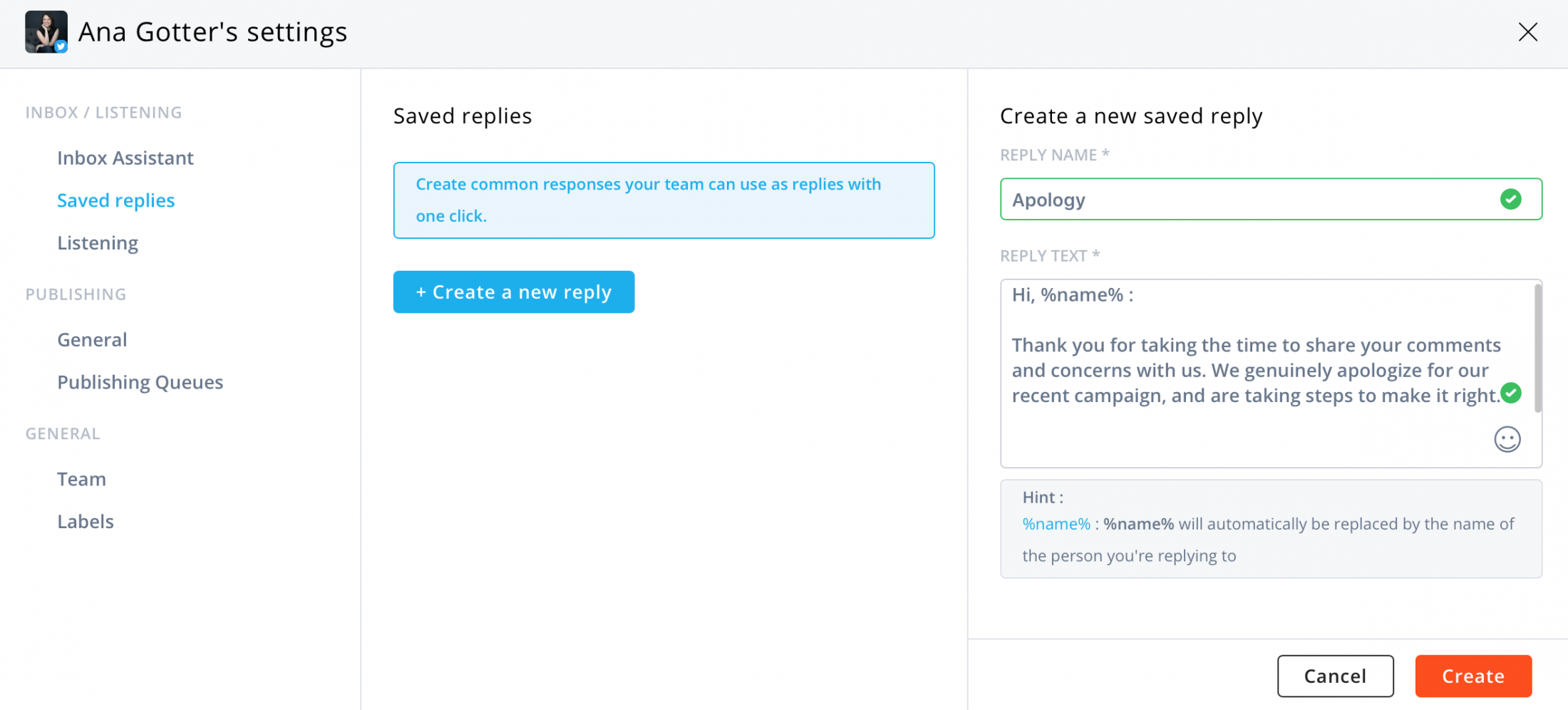You hope it won’t happen to you… The Big PR crisis.
And yet you know that it’s lurking round the corner, even though you are doing your best. We’re humans, and humans make mistakes.
Sometimes those mistakes are integrated with a perfect combination of societal rage and Twitter posts going viral. Then you’ve got a PR crisis on your hands.
PR crises can sink a business. If you handle the situation correctly, however, you can build customer trust and resolve everything relatively smoothly.
Social media is often going to be where the crisis spreads like wildfire. Ironically enough, it will also be a crucial part of putting that fire out.
In this post, we’re going to dive deep into social crisis management, including the role social media plays and how to use saved replies in order to tackle the problem as quickly and efficiently as possible.
Why Does Social Media Play a Part in a PR Crisis?
PR crises have always been a potential threat for businesses, but in the day of the internet (and more aptly, Twitter), it’s the difference between lighting a patch or tossing that lit match into a barrel of kerosene.
This is one reason why social media management plays an important role in handling a PR crisis.
You’ll likely get a ton of both public messages and private messages coming to you at rapid fire. Having targeted efforts to bring things from a boil to a simmer can actually help. It shows that you’re taking responsibility and addressing the issue and that you care about everyone who was affected.
Social media is also becoming the medium that increasing numbers of users are relying on to communicate with their brands. 79% of customers prefer live chat options because of the immediacy that offers and nothing screams “urgent” quite like a PR crisis where a lot of people are upset.
Handling these huge influxes of messages– both public and private– will be an essential part of mitigating the crisis and ensuring that you don’t sacrifice customer relationships in the process.
Today, PR crisis management often starts with social crisis management.
Related Post: Social Media Management
The 4 Social Management Crisis Saved Replies You Need
When you’re elbow-deep in a social management crisis, managing your inbox properly is going to be one of the most important tasks on the list. This will involve addressing everyone who gets in touch with you, both publicly and privately.
The Agorapulse inbox can help with this overall, giving you a single stream of incoming messages that are happening on a platform.
You can assign individual messages and tasks to team members so everyone’s concerns are addressed. This is already an advantage but utilizing tools like the inbox’s saved replies will be a life saver. (Play this video to see saved replies in action.)
You can create saved replies within the inbox management features and then use them to quickly answer common questions or messages you’re receiving.
They can be personalized once you pull them up in response to a customer so you can adjust the messaging as needed in each situation, even if it’s just adding the user’s name.
In non-crisis times, these are often used for “When will my order get here” and “what are your store hours.” During a PR crisis, however, you’ll want to have a number of related saved replies ready to go.
Here are the ones that I recommend having on hand.
1. The general apology
A general apology for the situation at hand is always good to have ready in a saved reply. You can be specific or just reference the crisis in passing.
If you need to, you can consult a legal team before crafting this reply, but otherwise apologizing to “all of those affected” and letting people know that you’re “working to make it right” can be a good start.
2. “We’ll be with you shortly”
This message can be combined with the apology message. Sometimes no matter how many social media managers and customer service reps you have on the case, it’s too many messages coming in to respond to personally at once.
Having a message like the following can let people know that you’ve heard them, and will be with them as soon as possible:
“Thank you for getting in touch with us. We’re sorry to hear about your experience. Due to a high influx of messages, it will take us up to 24 hours to get back to you. If you require urgent attention, please call our customer service line here.”
3. The Olive branch solution
Sometimes, something happens where a large number of users are inconvenienced or hurt at once. If you have a solution in place for anyone affected, like a refund or a free discount, have that ready in a saved reply– even if it can’t be processed through the social media messages.
Something like this can be effective:
“Hi [name], we apologize that you had this experience. In our effort to make things right, we’d like to refund you for your past month’s subscription and offer you 10% off your next purchase. Can you send us a request through the link below? We’re aiming to process all requests by the end of the week.”
4. “Send Info Here”
Sometimes, part of a crisis will involve collecting information about what happened or about who was affected. In many cases, that’s not always best handled through social media.
If that’s the case, have a saved reply on hand that contains the links or contact information that users can use to submit that information. Make sure to specify how long it will take to hear back or what to expect, along with an explanation with why users need to go through the process.
How to Get the Most Out of Saved Replies
Saved replies are only as strong as the messages you craft and how you use them. In order to get the most out of them, keep the following tips in mind:
- Personalize the messages when possible. Whether it’s just a name or altering the message to address specific concerns, this goes a long way. People are already on edge during a PR crisis, so offering personalized messages that show you care about the individual will be important.
- Don’t use them as a crutch. Saved replies are an important tool to streamline your crisis management but they are not the only tool that you need. Sometimes you won’t be able to use a saved reply at all, so don’t try to make everything fit into a box it doesn’t belong in.
- Have multiple saved replies ready to go. Typically during a crisis, you may see several types of messages. If you do, you’ll likely need more than one saved reply ready to go. You may need a general apology and a solution and a we’ll be with you shortly message. You might end need a “Thank you again for your understanding and we look forward to working with you moving forward” to end the conversation.
Conclusion
A PR crisis– or any kind of business crisis– is never fun, but nobody is perfect and sometimes mistakes or errors in judgement do happen.
Identifying and tackling the problem head on is the best way to handle it. Hiding it almost never works. Stay accessible to your customers and respond to each of their messages as thoroughly and calmly as possible. Saved replies will help, but don’t forget to add in some empathy and authenticity, too.
What do you think? Have you ever experienced a PR crisis that relied on social crisis management? How did you use social media to extinguish the flames? Share your thoughts, knowledge and questions in the comments below!







